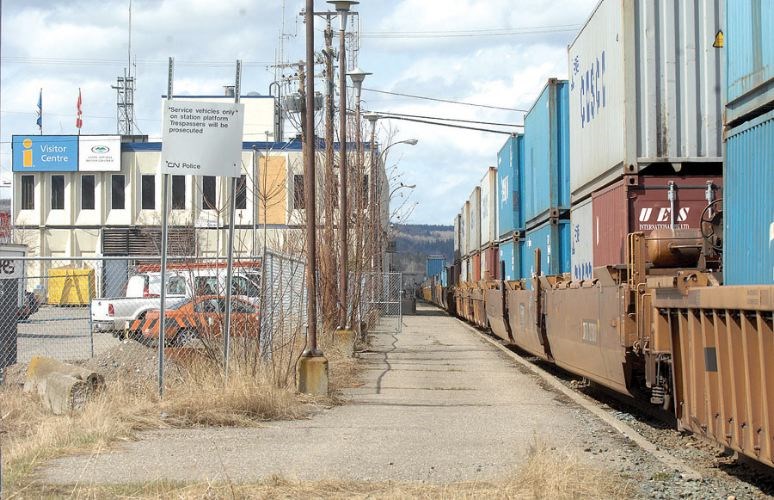The sight and smell of railway locomotives churning out blue diesel smoke has become all too familiar for people who venture close to the downtown CN railyard.
If projections are on target and the flow of goods to and from Asia continues to increase, rail traffic going through Prince George will grow an estimated 800 per cent by 2020, and that has pediatrician Marie Hay worried.
As a medical doctor, Hay knows the potential for longterm harm to the city's population from accumulated diesel fumes and volatile chemicals kicked up into the airshed as railway dust and vented those concerns last week at the North Central B.C. Clean Air Forum at the Civic Centre.
"If you have fossilized locomotives resident in Prince George that do the shunting [of railcars], these 30- or 40-year old trains emit really toxic diesel fumes," said Hay. "The soil around the railbeds in the First Avenue area is going to be soaked in diesel from all the trucks that supply and load the trains and the creosote from the rail ties gets soaked into the ground as well. That dust causes toxic fine particulates and that is a concern for anyone living in the downtown."
Hay, president of the People's Action Committee for Healthy Air, said CN could reduce the harmful effects of its day-to-day operations by paving the 12 railbeds it has downtown and start using low-emission locomotives to shunt its trains in the city.
"CN made $167 million in profit in the last quarter and it takes approximately $5 million to blacktop in between the railbeds -- they could invest in Prince George because we're going to be giving them all this increased rail activity," said Hay.
"The need to get rid of the old fossilized locomotives that I think the Environmental Protection Agency banned in the U.S.A. and they got transferred up to remote and rural areas in Canada. We need to get rid of them and bring in either electric locomotives for shunting or liquid natural gas."
Hay said while CN Rail representatives sit on the Prince George Air Improvement Roundtable, the company is federally regulated and it doesn't have to respond to pressure from municipal, regional or provincial authorities to improve on air pollution emissions.
"We're so close on First Avenue to this potential tsunami that I think we all need to sit up and pay attention," Hay said.



